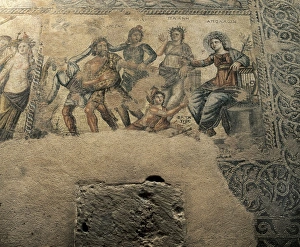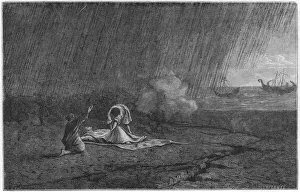Pliny Collection
"Exploring the Legacy of Pliny: A Journey through Time and Knowledge" Step into the world of Pliny
All Professionally Made to Order for Quick Shipping
"Exploring the Legacy of Pliny: A Journey through Time and Knowledge" Step into the world of Pliny, a renowned Roman scientist and scholar whose contributions continue to captivate us today. From ancient manuscripts to intricate engravings, we unravel the fascinating tales surrounding this influential figure. In 1551, Gesner's armoured rhino after Durer reminds us of Pliny's insatiable curiosity for nature's wonders. His comprehensive work, "Natural History, " depicted in a historiated initial N on vellum, reveals his tireless efforts to document every aspect of the natural world. The death of Elder Pliny serves as a poignant reminder of his unwavering dedication. As he perished during the eruption of Vesuvius in 79 AD while attempting to rescue others, his sacrifice immortalized him as a symbol of bravery and intellectual pursuit. Meanwhile, Robert Basset's engraving on the title page of "Curiosities: or The Cabinet of Nature" pays homage to Pliny's vast knowledge. This compilation showcases his profound impact on subsequent generations who sought wisdom within its pages. Delving deeper into Pliny's life, we encounter select letters from his younger counterpart published in Boston. These epistles offer glimpses into both personal anecdotes and scholarly discussions that shaped his legacy. Amidst these literary treasures lies an enchanting engraving depicting the Villa of Younger Pliny—a testament to their shared passion for beauty and tranquility amidst bustling Roman society. Plunging back into nature itself, we discover prickly poppy and butcher s plants—species meticulously studied by our protagonist. Through these botanical explorations, Pliny unraveled secrets hidden within flora that still amaze scientists today. As we reflect upon these fragments from history—be it Gesner’s rhino or Younger Pliny’s villa—we are reminded that knowledge is timeless.



































